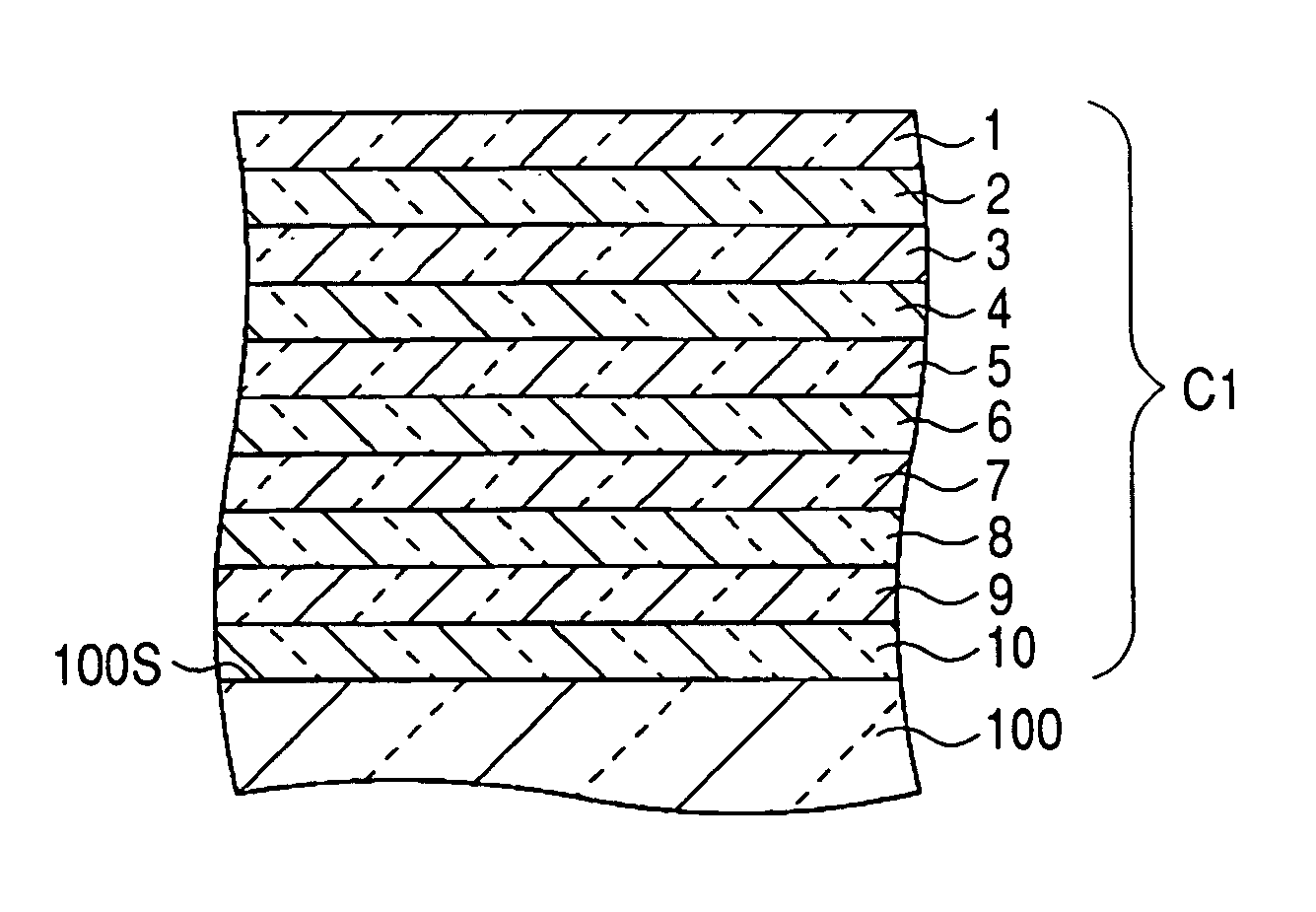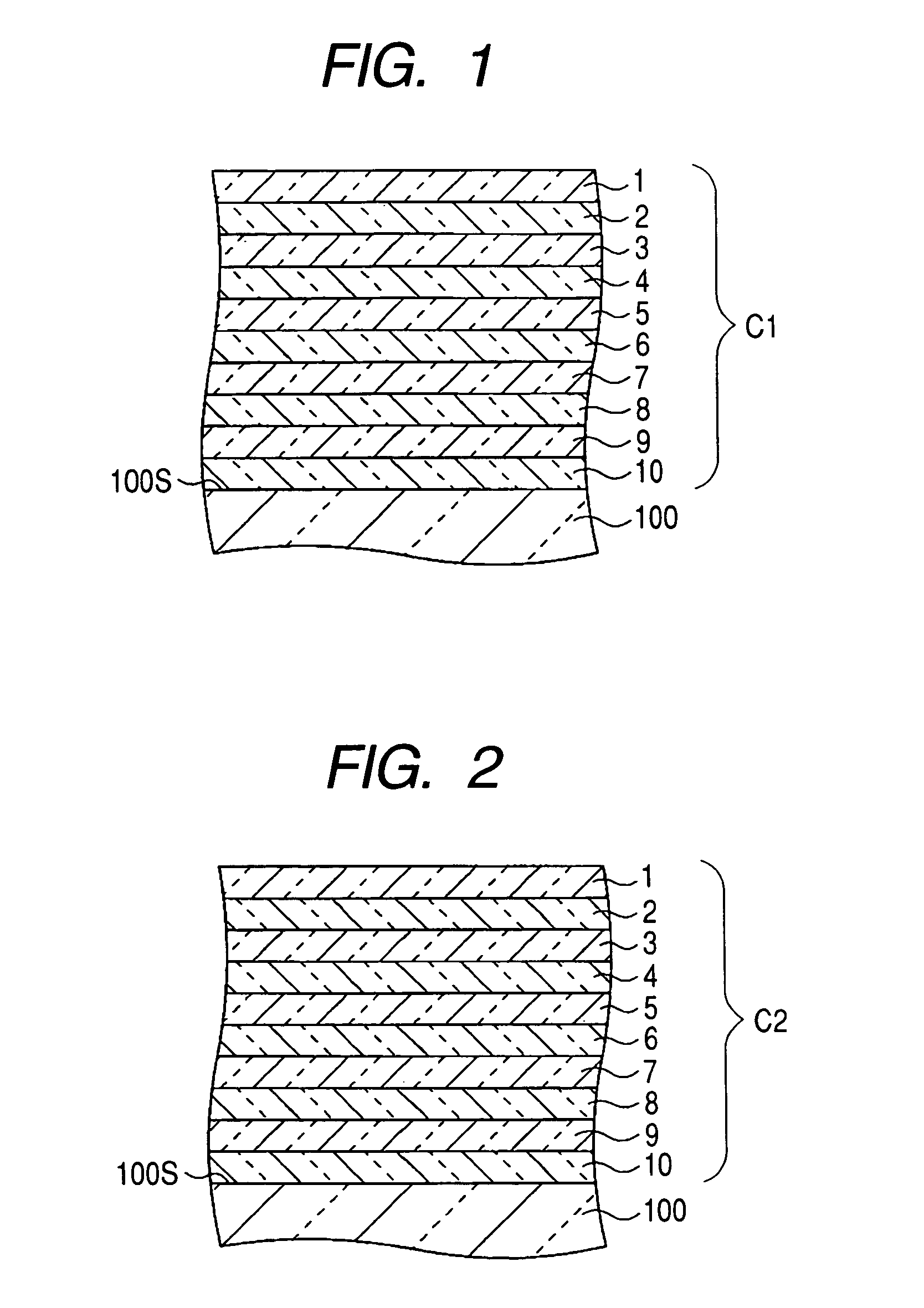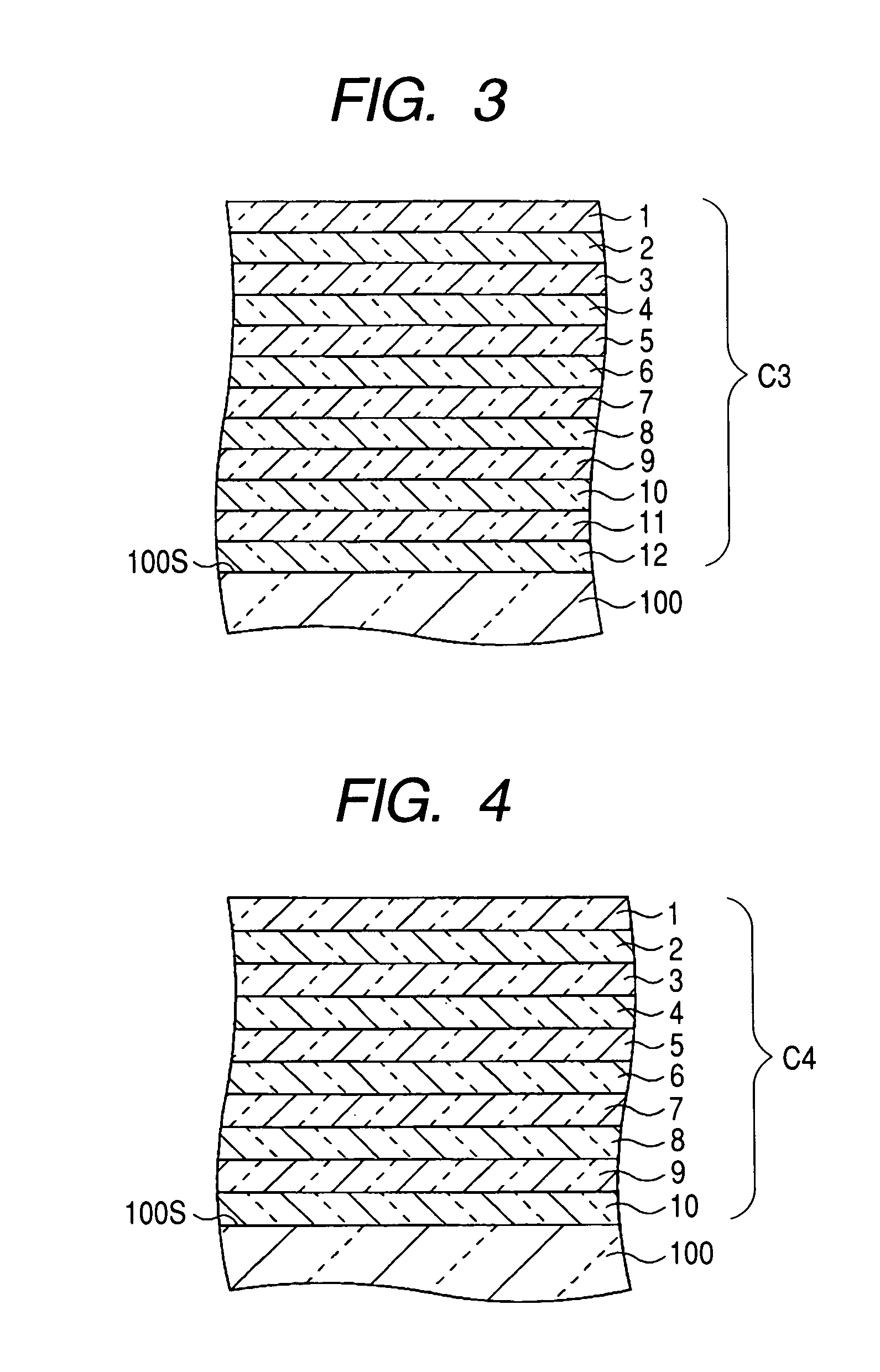Antireflection film
a technology of anti-reflection film and anti-reflection film, applied in the field of anti-reflection film, can solve problems such as impaired chromaticity balance, and achieve the effects of excellent chromaticity balance property, sufficient reduction of reflectivity, and suppression of flares and ghosts
- Summary
- Abstract
- Description
- Claims
- Application Information
AI Technical Summary
Benefits of technology
Problems solved by technology
Method used
Image
Examples
first embodiment
[0092]FIG. 1 is a schematic section view showing the configuration of an antireflection film C1 according to a first embodiment of the invention. The antireflection film C1 of FIG. 1 corresponds to a first numerical example (FIGS. 9 and 10) which will be described later.
[0093]The antireflection film C1 is a multilayer film which is disposed on the surface 100S of an optical substrate 100, and which consists of ten layers in total, that is, first to tenth layers 1 to 10 that are stacked sequentially from the opposite side to the optical substrate 100. In the embodiment, the surface 100S is a flat face. The invention is not limited to this, and the surface may be a curved face. Namely, a lens having a spherical surface or an aspherical surface may be used as the optical substrate 100, and the antireflection film C1 may be disposed on the spherical or aspherical surface.
[0094]The optical substrate 100 is made of a transparent material such as glass or a crystal material. Specifically, ...
second embodiment
[0101]FIG. 2 is a schematic section view showing the configuration of an antireflection film C2 according to a second embodiment of the invention. The antireflection film C2 of FIG. 2 corresponds to a second numerical example (FIGS. 11 to 18) which will be described later.
[0102]In the same manner as the antireflection film C1 of the first embodiment described above, the antireflection film C2 is a multilayer film which is disposed on the surface 100S of the optical substrate 100, and which consists of ten layers in total, that is, first to tenth layers 1 to 10 that are stacked sequentially from the opposite side to the optical substrate 100. In the following description of the antireflection film C2, components which are substantially different from those of the antireflection film C1 of the first embodiment will be mainly described, and descriptions of the same components will be accordingly omitted.
[0103]Preferably, the optical substrate 100 is made of a transparent material which...
third embodiment
[0108]FIG. 3 is a schematic section view showing the configuration of an antireflection film C3 according to a third embodiment of the invention. The antireflection film C3 of FIG. 3 corresponds to a third numerical example (FIGS. 19 and 20) which will be described later.
[0109]The antireflection film C3 is a multilayer film which is disposed on the surface 100S of the optical substrate 100, and which consists of twelve layers in total, that is, first to twelfth layer 1 to 12 that are stacked sequentially from the opposite side to the optical substrate 100. In the following description of the antireflection film C3, components which are substantially different from those of the antireflection films C1, C2 of the first and second embodiments will be mainly described, and descriptions of the same components will be accordingly omitted.
[0110]Preferably, the optical substrate 100 is made of a transparent material which exhibits a refractive index of 1.61 to 1.67 with respect to the d-lin...
PUM
| Property | Measurement | Unit |
|---|---|---|
| refractive index | aaaaa | aaaaa |
| refractive index | aaaaa | aaaaa |
| refractive index | aaaaa | aaaaa |
Abstract
Description
Claims
Application Information
 Login to View More
Login to View More - R&D
- Intellectual Property
- Life Sciences
- Materials
- Tech Scout
- Unparalleled Data Quality
- Higher Quality Content
- 60% Fewer Hallucinations
Browse by: Latest US Patents, China's latest patents, Technical Efficacy Thesaurus, Application Domain, Technology Topic, Popular Technical Reports.
© 2025 PatSnap. All rights reserved.Legal|Privacy policy|Modern Slavery Act Transparency Statement|Sitemap|About US| Contact US: help@patsnap.com



